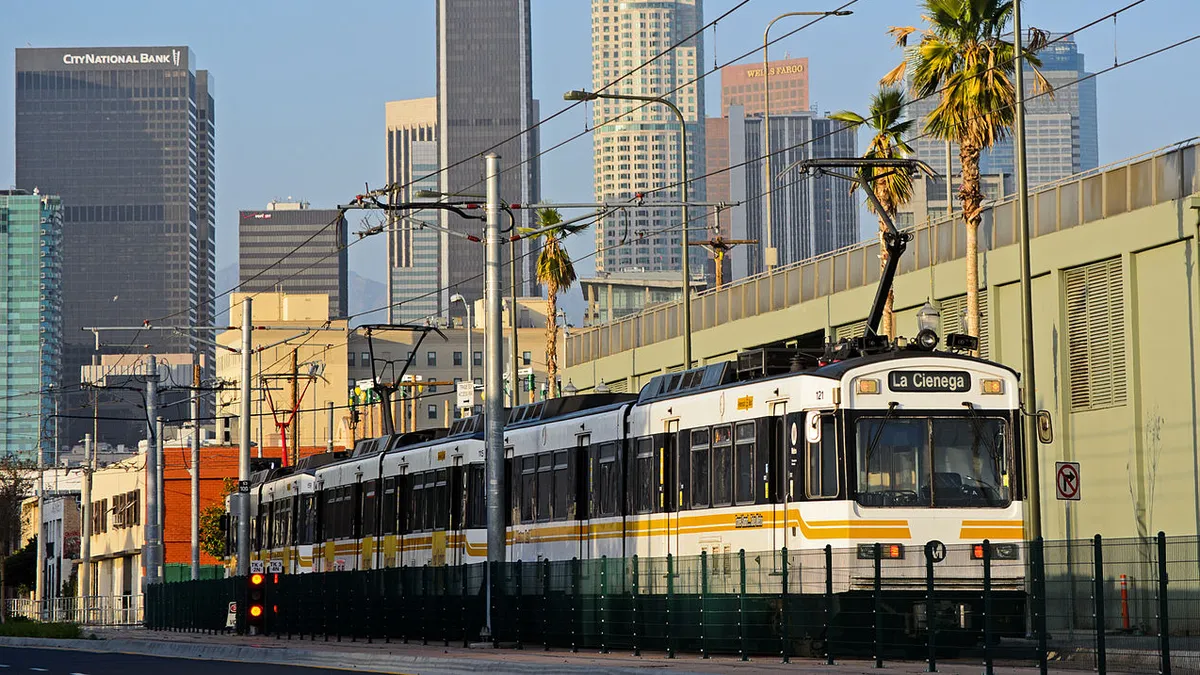Dive Brief:
- The Los Angeles County Metropolitan Transportation Authority has awarded a combined $133.5 million via pre-development agreements to two private sector teams for the $9.5 billion Sepulveda Transit Corridor Project in a move it says is a first-of-its-kind public-private model.
- Metro awarded STCP-Bechtel $69.9 million and LA SkyRail Express $63.6 million to further advance heavy rail and monorail concepts, respectively, to link the San Fernando Valley and L.A.’s Westside, and eventually, Los Angeles International Airport.
- Metro said in a statement that it hopes the PDA structure, which allows the authority to see detailed concept proposals before being committed to them, will increase the likelihood the project can be built.
Dive Insight:
The news comes after major contractors have balked about the risks involved in several high-profile public-private partnerships in recent years. Most notably, the Maryland Department of Transportation's $5.6 billion Purple Line project in the Washington, D.C. suburbs ran into numerous cost overruns, resulting in Fluor pulling out of the design-build joint venture last year.
L.A. Metro’s PDAs with the two teams working on concepts for the Sepulveda project aim to avoid that type of acrimony by involving multiple stakeholders early in the process, while leaving plenty of wiggle room for the project owner. For example, Metro stressed in the statement that it isn’t obligated to continue working with either team and said that the teams being paid to advance their concepts now could submit bids on the final project, but that doing so isn’t guaranteed.
Yousef Salama, a former senior manager for public-private partnerships at Metro who is now an associate director at infrastructure consultant Turner & Townsend, said the PDA is designed to foster competition between the two concept teams, while bringing subject matter expertise into the process much earlier than is traditional.
For instance, while requests for proposals are typically put out after an environmental impact study has been completed, Metro is moving forward on that study now, at the same time the two teams are refining their concepts.
“The entire idea of the PDA is to bring early contract involvement into the project,” Salama told Construction Dive. “They want to bring in the PDA developers earlier to increase the likelihood that the project can be commercially successful in a P3 environment.”
At the same time, because both teams are being paid for their work up front, Metro will own the concepts and plans they produce, whether the groups are selected for the final project or not. With the overall project broken down into six phases, that means there are also plenty of exit opportunities for the project owner.
“Whatever work they've completed, Metro would pay them for it, and then Metro can choose whether they want to continue or not,” Salama said. “So there’s an off ramp there.”
Competing concepts
The two teams have thus far developed markedly different concepts to tackle the issue of moving people from the San Fernando Valley to L.A.’s Westside via Sepulveda Pass, where the I-405 freeway creates a notorious bottleneck that 400,000 people pass through daily.
STCP-Bechtel, for example, is working on a proposal for a heavy rail solution, 60% of which would travel underground, with the remainder of the line encompassing an aerial section. The group estimates costs at $10.8 billion, with a Valley-to-Westside trip taking 20 minutes.
LA SkyRail Express, made up of John Laing, BYD, Skanska and HDR, is proposing a monorail concept that would have an aerial alignment primarily within the I-405 right-of-way. Baseline proposal costs on that solution are $6.1 billion, with a trip time of approximately 24 minutes.
Working on those concepts simultaneously, through a PDA, should result in a desired outcome for Metro, Salama said, while paying the teams involved for their work upfront.
“These two firms are effectively competing with one another to design and deliver the greatest benefit for the available funding that Metro has,” Salama said. “And Metro gets two different alternatives — one above ground and one below — to satisfy their stakeholders and explain whichever decision they ultimately choose.”
Correction: This story has been updated to indicate that the Purple Line is being built by the Maryland Department of Transportation.













